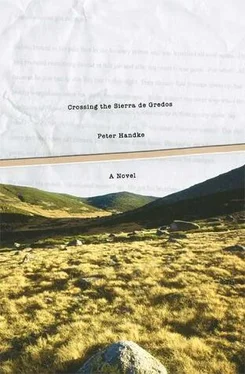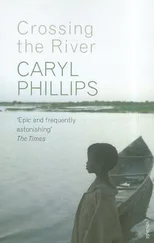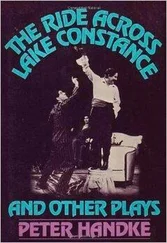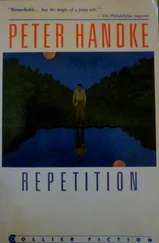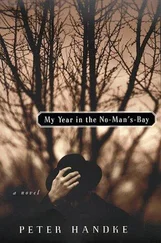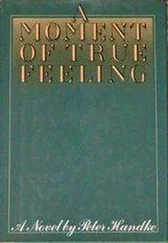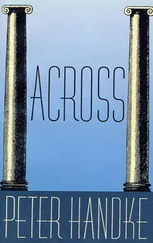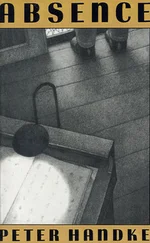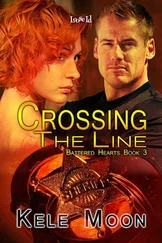“Even in the presence of animals, especially that of pets, cats, dogs, cows, hens, rabbits, I fell into this kind of dependency and lost my freedom, fell under the spell of animal eyes, under the spell of animal movements. It was almost only in dealings with inanimate objects that I escaped from this flailing and paralysis under the yoke of others. Lacking any connection to others came to be the freedom that could replenish me. To create a frieze, consisting of the gazes of contemporaries! To be splendidly relieved of relationships, I thought, would mean to be ripe for what is real.
“As a stonemason I knew I was free of the community tether at least for the duration of my workday, yet not entirely alone. But soon even at work I fell into a kind of dependency, though one that for a while propped me up instead of crushing me: constantly stumbling in the others’ present, and in the present altogether, I decided, as a stonemason, and this time not slavishly but full of determination, of my own free will, to forge a relationship with the historical period that I saw as most suited to me, the Middle Ages.”
The mason paused. He took another deep breath. Not a soul interrupted him. He resumed his narrative, in a voice seemingly not emanating from him, with no visible movement of his lips, although in no way with the ghostly quality of a ventriloquist.
“I made up my mind not to be a person of the present day, to be someone not of today. I wanted to be, and then actually was, associated with the stone structures, and even more with the stone sculptures, from the eleventh, twelfth, and thirteenth European centuries. These faces, whose ears often stuck out, whose noses looked squashed, whose lips were thick, whose eyes protruded from their sockets, these were my people. They absolved me, and I, crisscrossing Europe for years, on one pilgrimage after another, from one extended family carved in stone to the other, absolved myself in their company, face-to-face, listened to them, let them infect me with that thick-lipped grinning, that way of listening while attending to what was going on inside one, with that imperturbable yet quietly empathetic gaze, which registered me and my background at once playfully and kindly.
“For whole days and years my sole contact, my exclusive communication, was with those stone dream-dancers, fortunately seldom hewn out of marble, mostly out of granite or a more friable stone. And, listen, all of you, I did not become eccentric as a result, but rather, through my daily involvement with them, I shook off any kind of eccentricity from earlier. And in silent conversation, face-to-face — yes, in their presence I felt my own blurry, slack face broaden, tighten, organize itself — I aired out my skull, into the farthest recesses of my brain, and then set out on my path with a clarity and energy such as I had rarely experienced, no, never experienced, in conversations with flesh-and-blood human beings.
“In the company of people from the Middle Ages, my chosen era, engaged day in, day out in dialogue, which was accompanied by tapping, sniffing, tracing their outlines, mimicking, in dialogue with my chosen people, which had long since ceased to be limited to those figures and works in stone, having expanded to include the heroic epics from that era, their plots continuing in me, as well as the illuminated initials in the old manuscripts and such, I envisioned spending the rest of my life in this period and passing my days on earth both peacefully and fruitfully, without ever again coming into contact, let alone collision, with present-day contemporaries, not a single one.”
And this was the moment when, out of the clear blue sky, the stonemason and wanderer spread his arms before the Argentinian or Sardinian woman sitting next to him, or whatever she was, and the pale young woman, with a blush engulfing her entire face, let herself fall against him. He hugged her. She threw her arms around him. The story tells us she embraced him. And he, as the story tells us further, locked his arms around her so tightly that she uttered a noise that sounded, though only in the first moment, like a wail. They held each other.
Or did the apparent wail actually come from him, or did it come from both of them? Or did it come from the male storyteller, or the female storyteller? And the story goes that the two of them remained in that position, eye to eye, as the wanderer and/or stonemason resumed his tale.
“But now it is all over with me and the Middle Ages. And the story of my involvement with the stone faces did not end only today — although perhaps it is not being fully recounted until today. The end of my relationship with them, and along with it that particular relationship to the world altogether, did not occur unexpectedly. These stone and painted and written models of composure, of fervent acceptance, of surrender, and of confident and sun-bright reason, which I saw as quintessentially medieval, inseparable from their hip angulation, faded only gradually, almost imperceptibly, did not leave me all at once, did not cease communication with me from one day to the next.
“Yet the way in which I found myself increasingly alone, almost imperceptibly yet steadily, struck me as all the more threatening. And finally I was left without them. They no longer said anything to me. I no longer said anything to them. I now had nothing to say or to give to anyone, to take from anyone, and likewise there was no longer anyone to say or give anything to me, to take anything from me. I no longer reacted to anything, either for good or for ill. I was alone. I was without a reference point. I am alone. I am lost.”
The woman at his side said, more affirming than interrupting: “I, too, am lost.”
The stonemason is said to have continued speaking, in an even deeper, more resonant voice: “But I am not giving up. My chosen era, the Middle Ages, is gone, once and for all. And so I must move to another period. I must find my way to others, against whom I can measure myself without shriveling up in their presence or letting myself be hemmed in and limited by them, or letting them clip all my antennae. I shall set out to find other people, people of now and today, in whose presence I can breathe a sigh of relief when I measure myself against them: people, living people, whose presence strengthens mine, as I do theirs. Such people must exist, even in the present. They do exist. It cannot be that I am lost and done for in the present. It cannot be that nowadays people like us have no choice but to perish.”
The woman at his side: “No, we are not lost and done for.”
They say the itinerant stonemason drew a deep breath, hit the table with one of his hammers, and picked up the thread again, addressing himself particularly to the woman who had commissioned the story: “In a transitional phase I was focused exclusively on destruction, just like your brother. I used these tools here no longer for constructing, shaping, laying stone upon stone, repairing, but for smashing, tipping, toppling, ruining. With my chisel I no longer struck shapes out of stone. I struck again and again, but not forms, and it was no longer only blocks of stone before me as earlier. With the mallet I split and smashed whatever lay in my path, anything that might have been used as a building block, let alone a cornerstone or a foundation. With my masonry saw I no longer sliced roofing slates and thresholds. With my masonry bit I drilled everything but friezes and ornaments, vents or drainage holes. With my level I measured everything but level surfaces. With my acetylene torch I cut everything but steel girders. Quite a few of the piles of rubble you encountered on your way through the Sierra were my doing.”
As he spoke, the mason, so the story goes, fell to gesticulating, more and more wildly and less and less in control of his movements, and in the end he was so tangled up in his fingers, arms, and legs — the fingers of one hand jammed between his knees, one leg wrapped around the other and as if bolted to it, his second hand caught in an armpit, incapable of moving backward or forward — that he crouched there completely immobilized, tied in his own straitjacket, violently scrunched up, and with every attempt to free himself from this position merely squeezing himself more hopelessly and painfully into his self-induced jam.
Читать дальше
